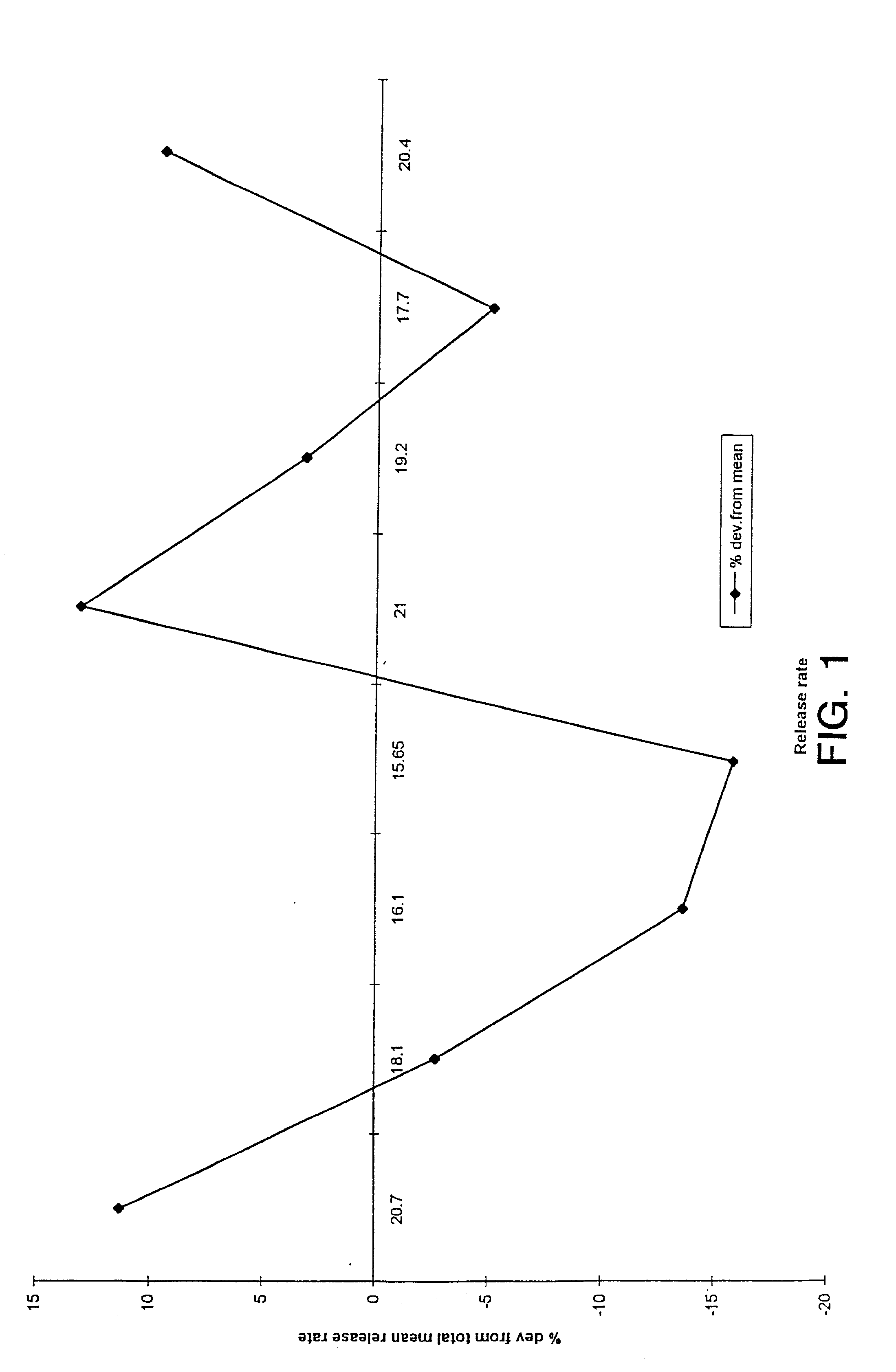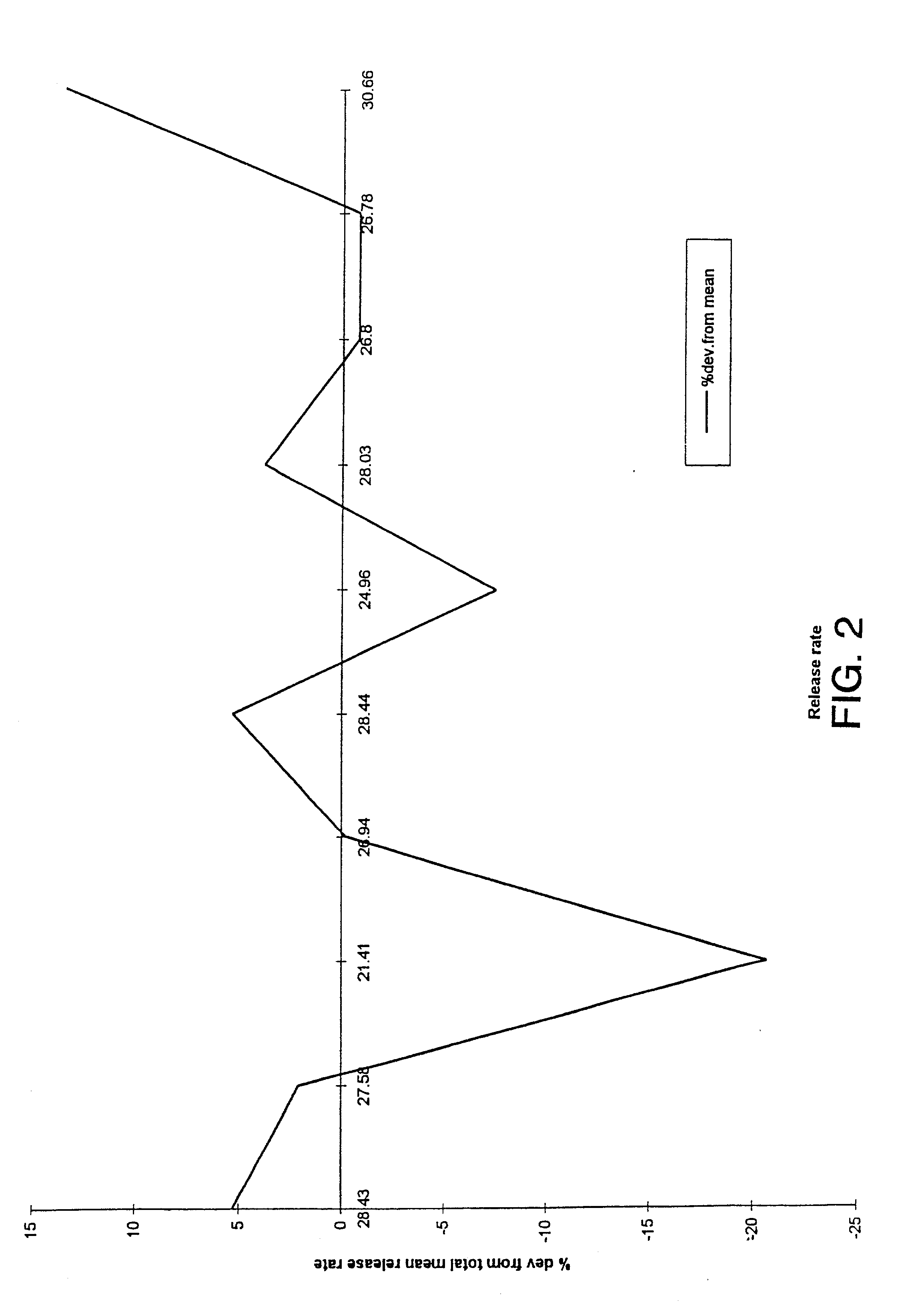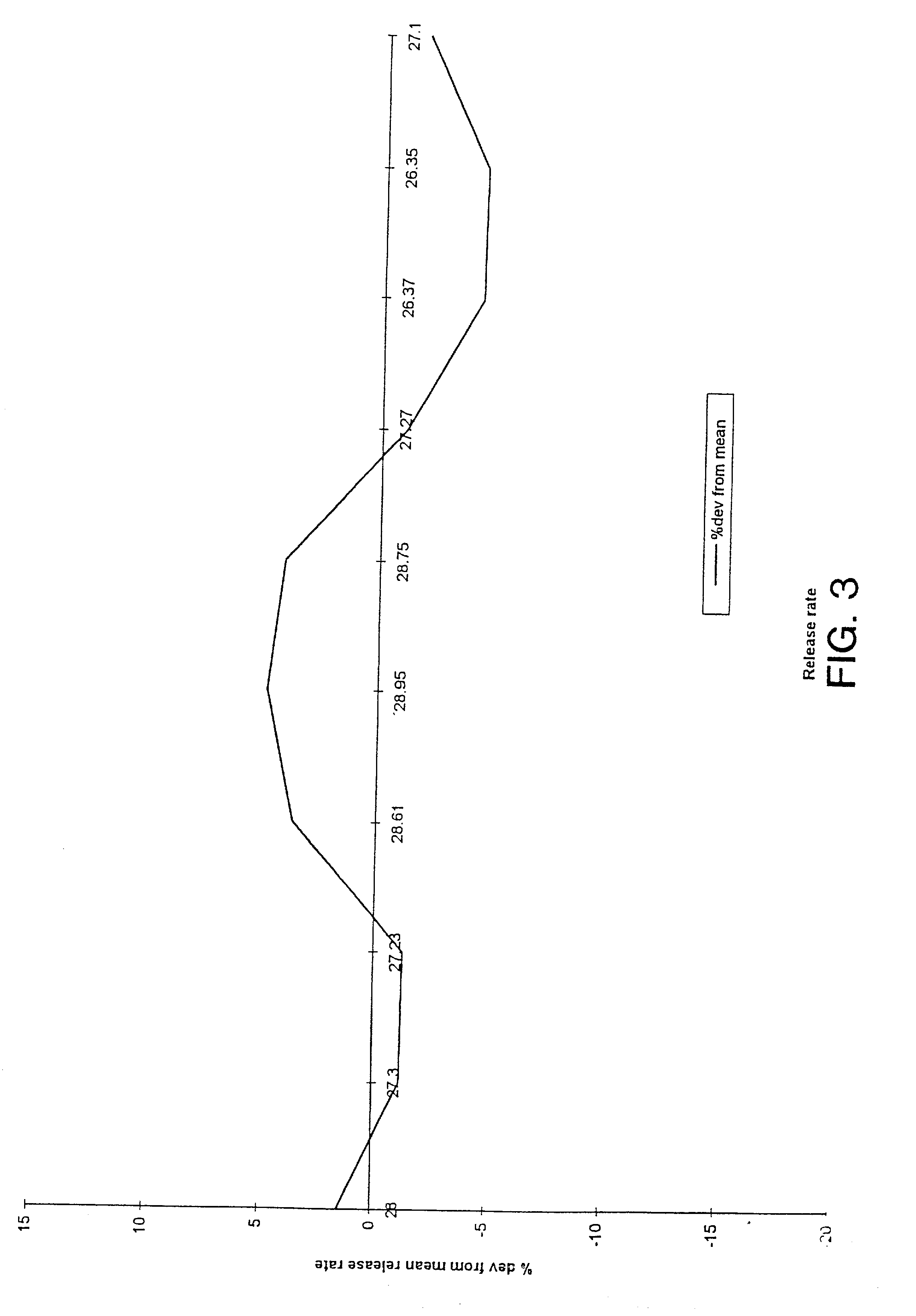Uniform drug delivery therapy
a drug delivery and uniform technology, applied in the field of uniform drug delivery therapy, can solve the problems of uneven drug blood level, uneven dosing of drugs, and inability to provide controlled and uniform therapy, and achieve the same dose-dispensing rate over time, and reduce the amount of retained or residual drugs
- Summary
- Abstract
- Description
- Claims
- Application Information
AI Technical Summary
Benefits of technology
Problems solved by technology
Method used
Image
Examples
example 1
[0019] A dosage form for delivering a drug orally to the gastrointestinal tract of the drug-receiving patient in need of the drug's therapy is prepared as follows: first, 5 mg of 135 m amlodipine besylate, a calcium channel blocker, is blended with a 5% solution of poly(vinylpyrrolidone) of 30,000 number-average molecular weight (available from General Aniline and Film Corporation, New York, N.Y.) in a fluid bed processor. Then, the granulated product is combined with 7.5 mg of 235 m particle sized a poly(ethylene oxide) of 175,000 number-average molecular weight (available from Union Carbide Corporation, Danbury, Conn.), 0.5 mg of sodium chloride and 0.02 mg of stearic acid, and blended at 35 rpm for 7 minutes to provide a homogenous blend. The homogenous blend is compressed into a drug composition and surrounded with a wall comprising a semipermeable composition and an exit-forming agent.
[0020] The wall composition comprises 65 wt % cellulose acetate having an acetyl content of 34...
example 2
[0021] The procedure of the above example is followed in this example, wherein in the present example the drug is selected from the group consisting of 5 mg of lisinopril, indicated as an angiotensin converting enzyme inhibitor; 10 mg of buspirone hydrochloride, indicated as an antianxiety drug; and 5 mg of oxybutynin hydrochloride, indicated for relief of bladder instability; and wherein the lubricant is magnesium stearate and the semipermeable wall comprises mannitol.
example 3
[0022] A dosage form for the osmotically and hydrokinetically controlled release of a beneficial drug is made as follows: first, 500 mg of the oral antibacterial ciprofloxacin hydrochloride of 125 microparticle size is added to a mixing bowl, followed by the addition of 105 mg of sodium carboxymethylcellulose of 22,000 number-average molecular weight and 135 .mu.m size. The ingredients are mixed for 3 to 5 minutes to yield a homogenous mix. Next, 10 mg of 88 microcrystalline cellulose of 11,000 number-average molecular weight and 0.05 mg of drug-delivery surfactant sodium lauryl sulfate are added to the bowl, and all the ingredients mixed for 5 minutes. Then, an aqueous solution containing 7.5 mg of poly(vinylpyrrolidone) of 30,000 number-average molecular weight is added, with mixing, and the resulting mixture is passed through an extruder onto a small tray and dried overnight. The granulation is dried for 5 hours at 50.degree. C., and 0.03 mg of lubricant is added with mixing for ...
PUM
 Login to View More
Login to View More Abstract
Description
Claims
Application Information
 Login to View More
Login to View More - R&D
- Intellectual Property
- Life Sciences
- Materials
- Tech Scout
- Unparalleled Data Quality
- Higher Quality Content
- 60% Fewer Hallucinations
Browse by: Latest US Patents, China's latest patents, Technical Efficacy Thesaurus, Application Domain, Technology Topic, Popular Technical Reports.
© 2025 PatSnap. All rights reserved.Legal|Privacy policy|Modern Slavery Act Transparency Statement|Sitemap|About US| Contact US: help@patsnap.com



